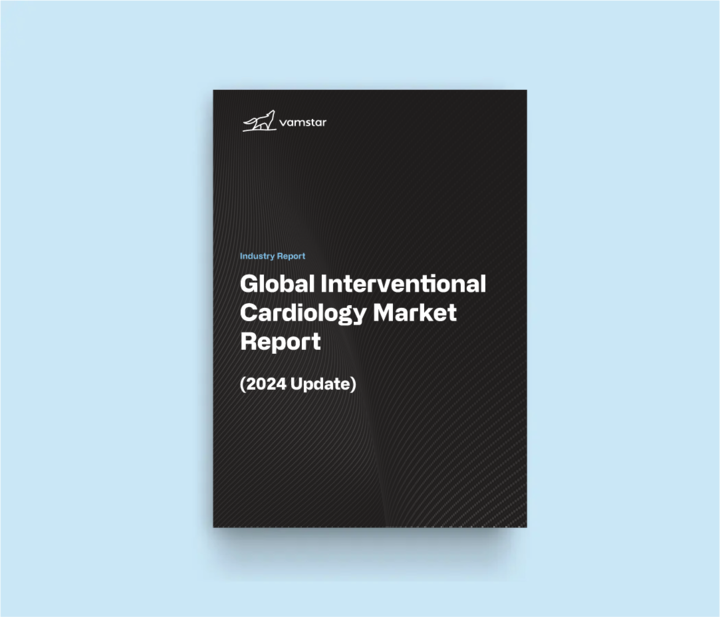5 minutes read
Current Trends and Future Outlook in the Orthopedics Market
The orthopedics market is poised for significant growth, driven by technological advancements, an aging global population, and a rising incidence of musculoskeletal disorders.
In 2024, the global orthopedic market is expected to surpass $59 billion, reflecting a robust growth rate of 6.5% compared to the previous year, which exceeds the industry’s historical average by three percentage points.
Key Players in the Orthopedics Market
Major players currently dominating the orthopedic market include DePuy Synthes, Medtronic, Smith+Nephew, Stryker, and Zimmer Biomet.
These companies are continually innovating and expanding their product portfolios. For instance, in recent developments:
- DePuy Synthes launched its TriALTIS pedicle screw system.
- Medtronic has been recognised for its ethical standards and continues to be a leader in spine and orthopedic products.
- Smith+Nephew made its Aetos Shoulder System fully commercially available in the U.S.
- Stryker surpassed $20 billion in full-year sales for the first time in 2023.
- Zimmer Biomet continues to innovate in orthopedic implants and digital technologies.
Investment Trends
The investment landscape in orthopedics has shifted towards later-stage companies with clear paths to profitability. Despite a slow pace of investment in 2023, the average investment amount has nearly doubled the historical average, totaling approximately $637 million across 27 investments.
Technological Advancements in Orthopedics
The orthopedics sector is at the forefront of technological integration, with significant developments in robotics, artificial intelligence (AI), and personalised medicine reshaping surgical procedures and patient care.
Robotics technology, for instance, is being increasingly adopted for knee and hip surgeries to enhance precision and reduce recovery times. This trend is supported by the development of devices like the MAKO robotic-arm assisted technology by Stryker, which allows for more accurate implant positioning compared to traditional techniques.
Moreover, AI is transforming patient management through predictive analytics and personalised treatment plans. AI applications range from diagnostic algorithms that enhance imaging interpretation to machine learning models that predict patient outcomes and optimize treatment protocols.
Additionally, advancements in 3D printing are facilitating the production of custom implants tailored to the individual anatomical requirements of patients, which improves compatibility and comfort.
Geographic Trends
The global orthopedics market exhibits diverse geographic trends, with significant growth opportunities in both developed and emerging markets.
In developed regions such as North America and Europe, the market is driven by an aging population, high healthcare expenditure, and the widespread adoption of advanced orthopedic solutions.
Conversely, the Asia-Pacific region is witnessing rapid market expansion due to increasing economic affluence, greater healthcare access, and rising awareness about orthopedic conditions.
China and India are particularly notable due to their large geriatric populations and growing healthcare infrastructure, which are expected to fuel demand for orthopedic procedures.
Additionally, the rise in medical tourism in countries like Thailand and Malaysia, known for cost-effective medical care, is attracting patients globally, further stimulating the regional markets.
Future Outlook
The orthopedics market is set for sustained growth, driven by continuous innovation and an increasing burden of orthopedic conditions globally. Future market dynamics are likely to be influenced by ongoing technological advancements, demographic shifts, and evolving patient expectations.
The market is also expected to benefit from a higher incidence of lifestyle diseases such as obesity and diabetes, which contribute to joint and bone issues, thereby increasing the demand for orthopedic care.
In the coming years, the integration of biologics with traditional orthopedic treatments could offer new growth avenues, particularly in regenerative medicine. Biologics are gaining traction for their potential to enhance healing and recovery in bone and soft tissue repairs.
The orthopedic industry is also likely to see a shift towards more outpatient and minimally invasive surgeries, which could decrease hospital stays and healthcare costs, further driven by patient preference for less invasive treatment options.
As the industry navigates through these changes, strategic mergers and acquisitions are expected to continue, enabling companies to broaden their technological capabilities and geographic reach.
This environment creates a fertile ground for innovations and collaborations that could significantly improve patient outcomes and efficiency within the healthcare system.
Integration with Data Orchestration: Vamstar’s Role
In such a dynamically growing industry, efficient data management becomes crucial. Vamstar’s data orchestration capabilities could play a pivotal role by enhancing data integration from various sources.
This includes ERPs, wholesalers, and inventory systems, which is vital for managing spend, supplier relationships, and contract sourcing.
The comprehensive approach ensures data quality and utility, supporting advanced analytics essential for making informed decisions in the fast-evolving orthopedics market.
The continued innovation and robust investment in the orthopedics sector signify a vibrant future, potentially revolutionised further by advanced data management and analysis technologies like those offered by Vamstar.
Speak to our industry experts
Vamstar boasts a team of industry experts equipped with advanced technological capabilities, ready to support the needs of your organisation. Click on the following link to learn more.
Other Materials
Book a 30 minutes meeting with us
Welcome to our scheduling page! Please choose an available date below to get started.
30 minutes meeting
We’ll email you the meeting link

























